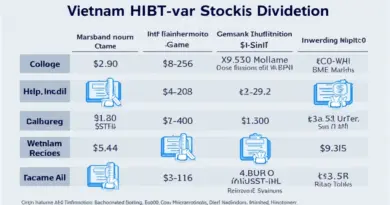Harnessing Compound Interest with Stocks: A Comprehensive Guide for Investors
Understanding Compound Interest in Stock Investments
Have you ever wondered how some investors seem to have an endless growth of wealth while others struggle to keep up? One of the key factors is compound interest. Essentially, compound interest is the process where your money earns interest on itself, leading to exponentially increasing returns over time. Similar to planting a seed that grows into a tree over the years, your investments can flourish and multiply with the right strategy.
Why Compound Interest Matters in the World of Stocks
According to recent financial studies, investors leveraging compound interest can see their assets double every 7 to 10 years, depending on the prevailing interest rate. This principle becomes even more powerful when applied to stocks. For instance:
- If you invest $1,000 at an annual return of 8%, you could have around $2,159 in 10 years.
- At a 10% return, that sum could reach approximately $2,593.
This illustrates how vital it is to understand and utilize compound interest effectively in your investment strategy.

Maximizing Returns: Long-Term Investments vs. Short-Term Flipping
Many new investors often wonder, should I be doing long-term investments or should I consider short-term trading? Here’s the answer:
While both strategies can be beneficial, long-term investments are generally more favorable for leveraging compound interest. When you hold stocks for a longer duration, you not only benefit from potential price appreciation but also enjoy the compounding of dividends and interest accrued over time.
Example of Compounding with Stocks
To illustrate, let’s imagine you purchase shares in a company that pays a dividend. Rather than cashing out the dividends, you reinvest them:
- Year 1: Invest $10,000 at an 8% return.
- Year 2: Add $800 in dividends to your investment.
- Year 3: Your new total investment is $10,800 and effectively grows compounded dividends for the next year.
Each year, your total investment increases, leading to even higher dividends, demonstrating the magic of compound interest in action.
Setting Realistic Goals for Your Investment Strategy
When setting out to benefit from compound interest in stocks, it’s imperative to have a clear goal. What do you hope to achieve within 5, 10, or even 20 years? According to Investopedia, having a time horizon will help you select suitable assets and determine risk tolerance. Here are a few tips:
- Start early: The sooner you begin investing, the more you’ll accumulate over time.
- Stay disciplined: Consistently invest, even if the amount is small.
- Reinvest dividends: Always opt to reinvest dividends instead of cashing them out.
Conclusion: Unlock the Power of Compound Interest in Your Portfolio
In summary, leveraging compound interest with stocks is a powerful strategy that can lead to substantial wealth growth over time. Focus on long-term investment, reinvest your dividends, and keep aiming for your financial goals. Take action today by assessing your investment strategy and embrace the potential of compounding!
Remember, this article does not constitute investment advice, and it’s essential to consult local regulations or a financial advisor before making any investment decisions.






